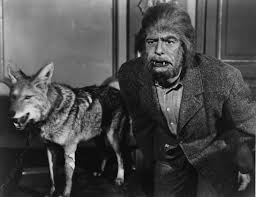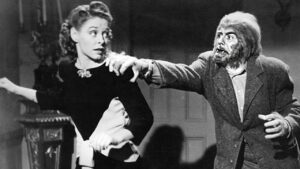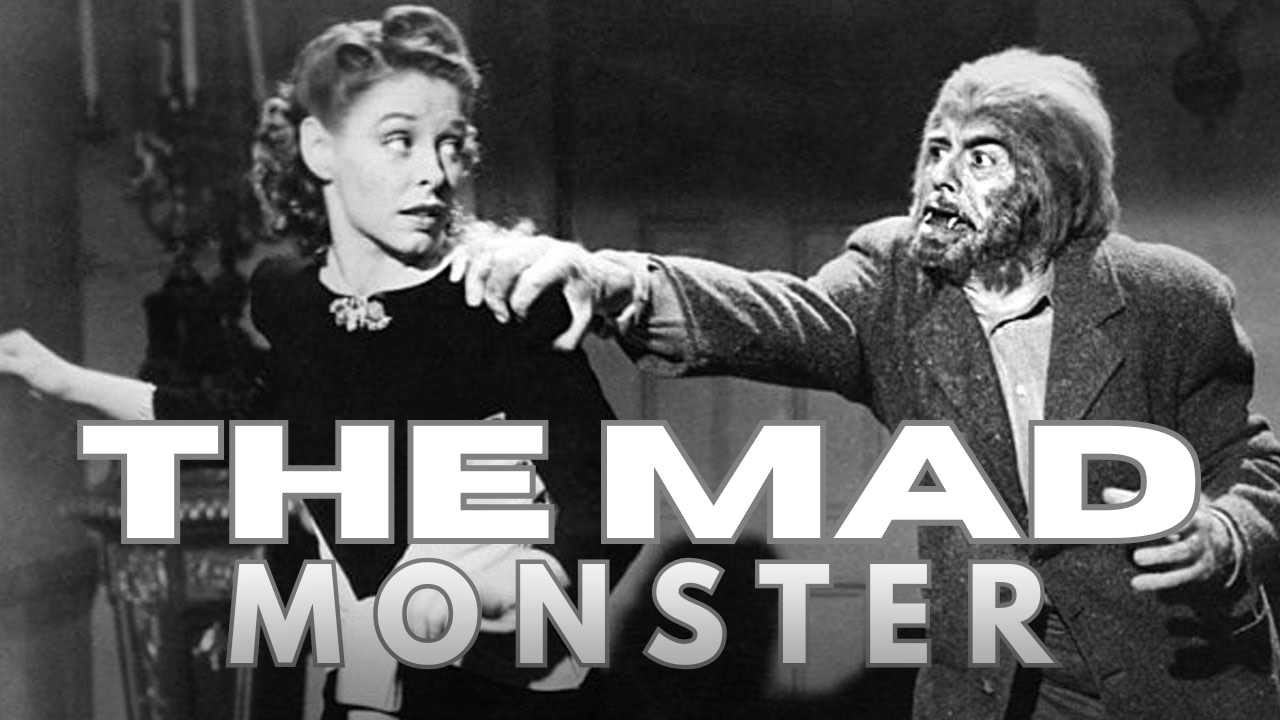A Classic Tale of Science Gone Wrong

The 1940s were a golden age for atmospheric horror films, and “The Mad Monster” (1942) is a shining example of this era’s chilling creativity.
Directed by Sam Newfield and produced by Sigmund Neufeld, this film takes viewers on a journey into the dangers of unchecked scientific ambition. Featuring stellar performances, eerie cinematography, and a gripping narrative, “The Mad Monster” remains a must-watch for lovers of vintage horror.
Plot Summary: The Descent into Monstrous Madness

“The Mad Monster” tells the harrowing tale of Dr. Lorenzo Cameron, a brilliant yet ostracized scientist determined to prove his theories correct. After being mocked and dismissed by his peers, he devises a horrifying experiment—injecting wolf blood into a human subject. His victim is Petro, his simple-minded but loyal gardener, who undergoes a terrifying transformation into a savage werewolf-like creature.
Dr. Cameron’s goal is revenge. He sends Petro out to eliminate the scientists who ridiculed him. However, as Petro’s violent nature grows beyond control, it becomes clear that the experiment has spiraled into a nightmare. With each brutal killing, the city becomes gripped with fear, and law enforcement struggles to track down the monstrous culprit.
As the film progresses, Dr. Cameron’s descent into madness becomes as chilling as Petro’s transformation. His thirst for vengeance blinds him to the horror he has unleashed. The climax builds to a thrilling conclusion where science, morality, and monstrosity collide.
Cast and Main Characters
-
George Zucco as Dr. Lorenzo Cameron – A disgraced scientist obsessed with proving his theories, ultimately creating a monster in the process.
-
Glenn Strange as Petro – The kind-hearted but mentally challenged gardener turned into a brutal killing machine.
-
Johnny Downs as Tom Gregory – A determined journalist who begins to uncover the horrifying truth.
-
Anne Nagel as Lenora Cameron – The scientist’s daughter, who struggles with her father’s dark ambitions.
-
Robert Strange as Professor Fitzgerald – One of the scientists targeted by Dr. Cameron’s wrath.
Character Deep Dive
Dr. Lorenzo Cameron: The Scientist Who Played God
George Zucco delivers a masterful performance as Dr. Lorenzo Cameron, a scientist whose genius is overshadowed by his obsession. Cameron is both tragic and terrifying, embodying the archetype of the “mad scientist” who lets ambition override morality. His hatred for his former colleagues fuels his determination to create a weaponized human. However, as the experiment spirals out of control, his own sanity unravels, making him just as monstrous as the creature he created.
Zucco’s portrayal is chilling. His intense gaze, commanding voice, and methodical demeanor make Cameron a truly sinister figure. The audience can’t help but feel a mix of pity and fear for a man who allows revenge to consume him entirely.
Petro: The Monster Born of Science
Glenn Strange brings a haunting presence to Petro, the unfortunate victim of Cameron’s twisted experiment. As a simple and gentle man, Petro initially evokes sympathy. However, once injected with the wolf serum, he becomes an unstoppable beast, driven by primal instincts and murderous rage.
Strange’s physical performance is particularly striking. His hulking figure and unrelenting aggression make Petro a fearsome creature, yet his moments of confusion and torment reveal traces of the man he once was. This duality adds depth to the film’s horror, as Petro’s tragedy is just as compelling as the terror he inflicts.
Cinematography and Atmosphere
One of “The Mad Monster’s” greatest strengths lies in its moody cinematography. The use of deep shadows, eerie lighting, and fog-drenched landscapes creates an unsettling atmosphere. The black-and-white aesthetic enhances the gothic horror, emphasizing the stark contrast between man and beast.
The transformation scenes, though simple by today’s standards, are effective. Clever camera angles and lighting tricks make Petro’s monstrous metamorphosis feel organic and terrifying. The film’s suspense is heightened by its slow-building tension, ensuring that each attack lands with maximum impact.
Themes: Science, Morality, and the Monster Within
While “The Mad Monster” delivers classic creature-feature thrills, it also explores deeper themes that remain relevant today.
The Dangers of Unchecked Science
Dr. Cameron’s experiment symbolizes the ethical dilemmas surrounding scientific progress. His reckless pursuit of power results in devastating consequences. This fear of uncontrolled experimentation was especially poignant in the 1940s, reflecting anxieties about wartime scientific advancements and their potential for destruction.
The Corruption of Humanity
Beyond physical transformation, the film examines the moral decay of its characters. Cameron’s descent into madness mirrors Petro’s loss of humanity. In many ways, the doctor becomes the true monster, as his actions are driven by a conscious decision to harm others, unlike Petro, who is merely a pawn in his scheme.
Fear of the Unknown
The film taps into the primal fear of losing control over oneself. Petro’s plight represents the terror of transformation, the idea that a person can become something unrecognizable. This theme resonates with broader fears of identity loss and dehumanization.
Legacy and Influence
Though “The Mad Monster” was a low-budget production, it has endured as a beloved classic among horror enthusiasts. It stands as an early example of the mad scientist trope, paving the way for future films that explore similar themes. The film’s blend of science fiction and horror influenced later werewolf and monster movies, leaving an undeniable mark on the genre.
Horror historians appreciate “The Mad Monster” for its contribution to 1940s cinema. Its atmospheric storytelling, strong performances, and philosophical undertones set it apart from other B-movies of the era. Today, it serves as a fascinating glimpse into the evolution of horror filmmaking.
Final Verdict: A Must-See for Classic Horror Fans
“The Mad Monster” may not have the budget of Universal’s famous monster films, but it delivers a gripping and eerie experience. Its exploration of scientific ambition, psychological horror, and monstrous transformations make it a standout in the realm of vintage horror.
For fans of classic cinema, “The Mad Monster” is an essential watch. It offers a mix of suspense, gothic atmosphere, and philosophical depth, making it more than just a simple creature feature. Whether you’re a seasoned horror aficionado or a newcomer to 1940s films, this movie is a chilling reminder of the fine line between man and monster.
So, dim the lights, grab some popcorn, and prepare for the terror of “The Mad Monster” (1942). Let its eerie world draw you in, and experience firsthand the horror of science gone horribly wrong!



